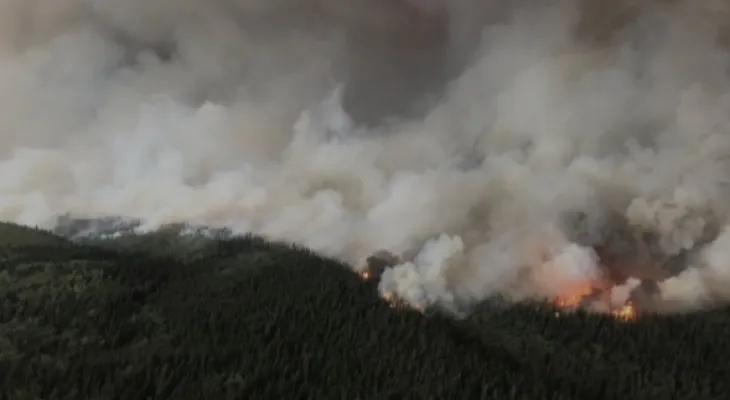Search here
Newspaper
Search here

Arab Canada News
News

Published: November 24, 2022
Canada is scheduled to have a new national climate adaptation strategy, outlining the government's intention to eliminate heat and wildfire-related deaths, and protect homes and businesses at risk of flooding.
Emergency Preparedness Minister Bill Blair is also set to release the adaptation strategy and its implementation plan on Prince Edward Island on Thursday. He will do so on behalf of Environment Minister Steven Guilbeault, who was called away for personal reasons.
The government describes the document as a preliminary blueprint to identify the risks Canadians face, find ways to reduce those risks, and set targets to actually achieve that.
Additionally, the goals will include better informing Canadians about these risks, ending all heat-related deaths, and raising the national disaster financial assistance program to not only cover recovery from a major event, but rebuilding to withstand the next event.
The government will also release a list of things it intends to do to help adaptation, including new investments in the federal disaster mitigation and adaptation fund, cash for fighting massive wildfires, and producing more comprehensive flood maps for the entire country.
Before discussing the new documents, Blair and several Liberal ministers and members of parliament will tour parts of P.E.I. that were destroyed by post-tropical storm Fiona two months ago. This includes Red Head Harbour, where one dock was destroyed, one dock was raised several meters due to the storm surge, and another disappeared entirely.
The storm caused damage estimated at about $66 billion. The federal government says that by 2030, extreme weather could cause $15 billion in damage annually. But that number could be lower if Canadians adapt to the climate we face now, rather than continuing to live in a country built for the climate of the past.
Guilbeault said in a statement Wednesday: "The adaptation choices and actions we take today will help determine the future of our communities, livelihoods, environment, and economy."
In the same context, this statement released an assessment of the climate impacts already facing Northern Canada. It warns that in the North, where warming happens three times faster than the global average, "climate change is causing severe, and in many cases irreversible, changes to northern landscapes and ecosystems." This includes thawing permafrost, shrub invasion on the tundra, shifts in species distribution, and increases in pests and fires.
Other regional assessments have already warned of everything from rising sea levels in the Atlantic, more frequent heatwaves in Quebec, heavy rainfall in Southern Ontario, to more frequent floods and wildfires in British Columbia.
In climate change policy, mitigation is the term used for actions to reduce greenhouse gas emissions that trap heat in the atmosphere causing warming. Adaptation is the term used for actions that adjust our lives to the fact that the planet has already warmed.
Furthermore, the adaptation strategy will include some specific and measurable targets ranging from flood protection to expanding protected areas. But these targets are temporary pending approval at the provincial and territorial levels. The government will spend 90 days consulting with provinces and territories on the plan and targets, some of which fall within regional jurisdiction.
Bill Feltmate, head of the Intact Centre on Climate Adaptation at the University of Waterloo, said adaptation is not just a nice thing, but a critically important mission. Feltmate was among dozens of experts who contributed to the development of the strategy, providing key areas for the government to focus on in the final plan, where Guilbeault announced their advice in May and the government spent the last six months consulting on the ideas.
Comments